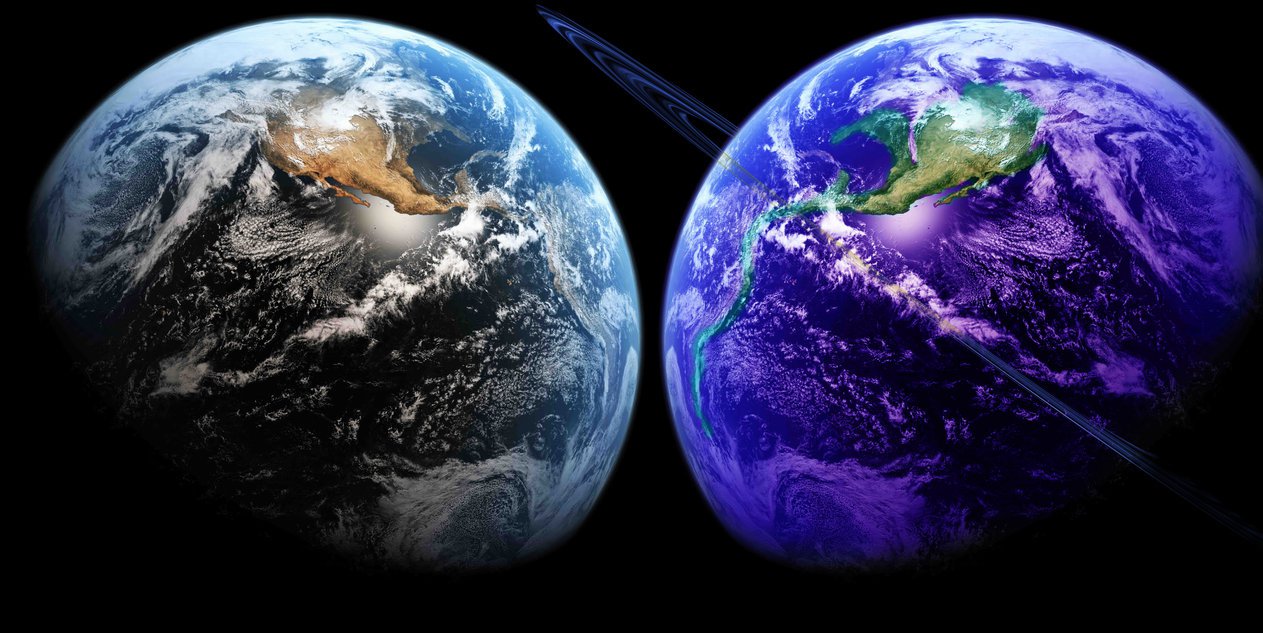
A Canadian study came up with a bold new cosmological model regarding the state of the universe before the Big Bang event. It theorized that the earlier universe started out as perfectly symmetrical due to having a mirror image of itself.
Everything in the mirror universe would be identical to our universe, except in reverse. Time would run backward, not forward, while matter would be made of antiparticles instead of particles.
Other researchers have already theorized about the existence of another universe before the Big Bang. But the mirror universe envisioned by the research team at the Perimeter Institute for Theoretical Physics would have been part of the current universe instead of a separate reality.
"Instead of saying there was a different universe before the bang, we're saying that the universe before the bang is actually, in some sense, an image of the universe after the bang," explained researcher Neil Turok. He and his colleagues described the current universe as a reflection of the old one as seen through the reality-bending lens of the Big Bang. (Related: Some black holes bring dead “zombie” stars back to life just to rip them apart later.)
A mirror universe may have existed for seconds after the Big Bang
The researchers suggested that our universe and its mirror image came into existence during the Big Bang. While our universe exploded forward in time, the mirror universe flowed in the opposite direction.
The model of a mirror universe would greatly simplify the very first second of the universe's existence. This would allow researchers to stop relying on strange multiverses and dimensions in order to explain certain complex parts of quantum physics. The simplified benefit would also apply to the Standard Model that is used to explain the subatomic particles of the universe.
A mirror universe would also provide a straightforward explanation for dark matter, the theoretical invisible matter that supposedly makes up most of the universe. It would certainly be much simpler than a theoretical sterile neutrino that can somehow pass through matter without interacting with the particles of the target.
"Suddenly, when you take this symmetric, extended view of space/time, one of the particles that we already think exists — one of the so-called right-handed neutrinos — becomes a very neat dark-matter candidate," explained Turok's fellow researcher Latham Boyle. "And you don't need to invoke other, more speculative particles."
A simpler explanation for dark matter and quantum physics
Turok, Boyle, and their colleagues came up with their new cosmology model after they got fed up with the most recent and increasingly exotic theories about the first few seconds of the universe after the Big Bang.
Ironically, Turok participated in developing a number of such theories, but eventually he wanted a simpler explanation. He said that his team's new, simpler mirror universe model possessed a big advantage over the others: It can be tested and verified.
In comparison, the current leading theory to explain dark matter is the weakly interacting massive particles (WIMPs). However, numerous studies have failed to provide evidence of the existence of WIMPs over the years.
With this in mind, the research team is planning to bring up elements of their model that can be measured and tested. One example is how the lightest neutrinos in their model would lack any mass altogether.
If this and other elements pass the tests, the mirror universe model could sweep away 30 years of established knowledge regarding the universe. It would be like starting from scratch, but this time the paper explaining how the universe worked would be much cleaner to begin with.
See more weird science news at WeirdScienceNews.com.
Sources include:
Please contact us for more information.















